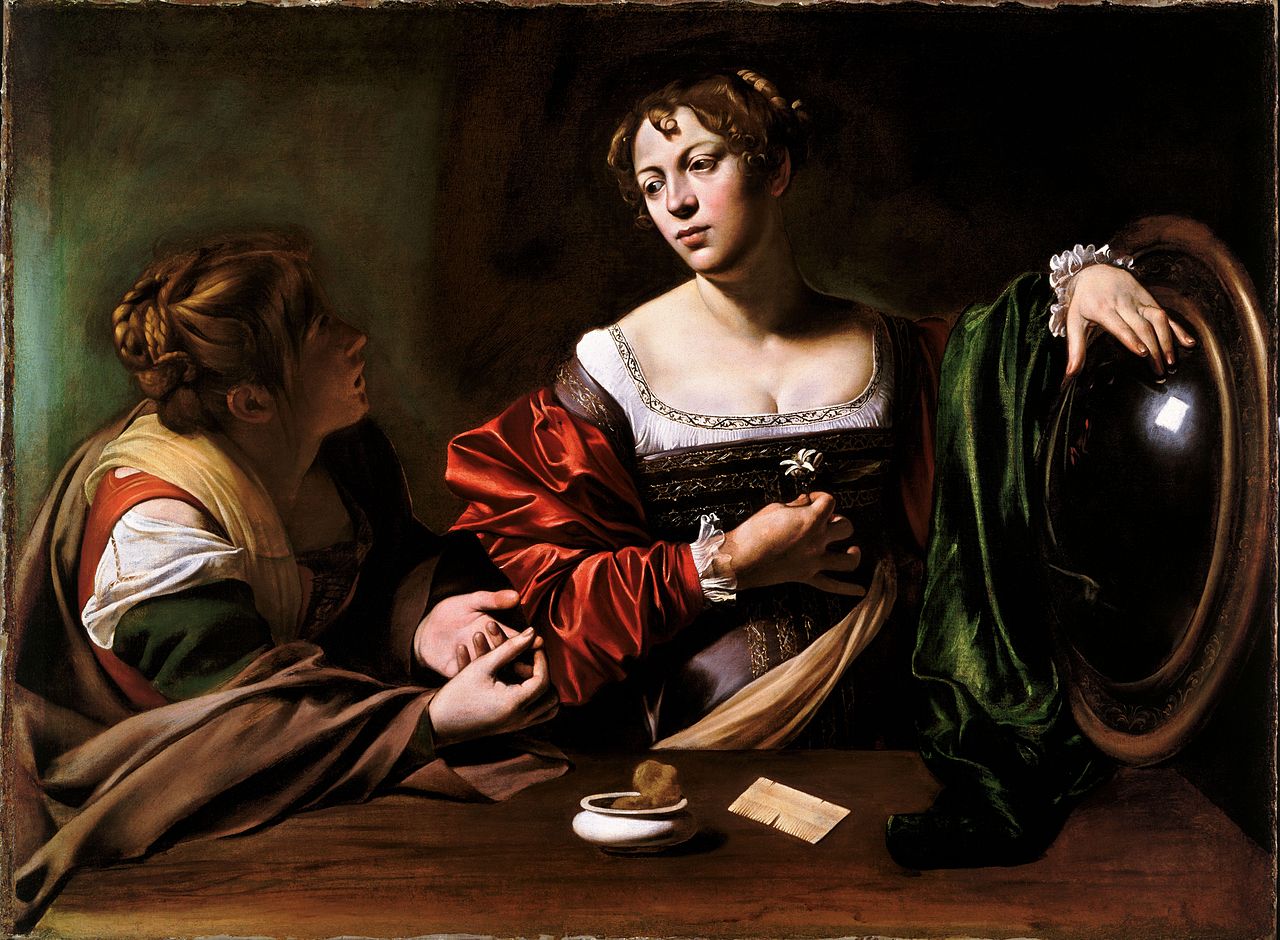Mary and Martha
Luke 10:38-42
38 Now as they went on their way [to Jerusalem], Jesus entered a village. And a woman named Martha welcomed him into her house. 39 And she had a sister called Mary, who sat at the Lord’s feet and listened to his teaching. 40 But Martha was distracted with much serving. And she went up to him and said, “Lord, do you not care that my sister has left me to serve alone? Tell her then to help me.” 41 But the Lord answered her, “Martha, Martha, you are anxious and troubled about many things,42 but one thing is necessary. Mary has chosen the good portion, which will not be taken away from her.”
Observations and Reflections

The story of Martha and Mary only appears in Luke’s gospel. As such we see a number of unique features that only appear in Luke’s writing. For example, almost exclusively, Luke uses the word “ὑποδέχεσθαι” which means to receive someone under one’s roof. The literal translation is under-receive or receive-under. Luke also tends to lift up stories of Jesus breaking conventional thought, especially with an element of social justice in mind. Luke also shows Jesus interacting with women much more often that the other gospels.

It is here in the story of Martha and Mary that we get another location point for Jesus. We just recently saw him in Samaria after He left Galilee. Now he is in Bethany, which is where the gospel of John says they lived (John 11:1). Bethany is just a mile or two east of Jerusalem, which is where Jesus has been heading since Luke 9:51. This journey to Jerusalem will be the last half of Luke’s gospel which is usually referred to as the travel narrative. With some help from Matthew 19 we actually have enough data points to map a generic route that Jesus likely took to Jerusalem. However, it is likely that there are points not recorded in the gospel travel narratives that would be helpful. While they may not be necessary for the gospel message, they are helpful when understanding Jesus’ audience and certain lessons that he teaches,
The lesson of Martha and Mary is understanding the value of something. I would argue that neither sister was better or worse than the other. Mary found value in the presence of Jesus while Martha found value in serving Jesus. It’s hard to imagine how either of the sisters could be in the wrong.
However, it was common for hosts in ancient times to serve food and drink to a guest. This task almost always fell to the women of the house. Thus, it would have been viewed as a job for both the sisters. One can see why Martha could be upset.
 Mary and Martha were sisters who had very opposite personalities. One was all about needing to constantly be on the go and doing her best to be a gracious host. Mary, on the other hand was more quiet, reserved and yet her reserved personality still made her an anxious learner and had the desire to grow.
Mary and Martha were sisters who had very opposite personalities. One was all about needing to constantly be on the go and doing her best to be a gracious host. Mary, on the other hand was more quiet, reserved and yet her reserved personality still made her an anxious learner and had the desire to grow.
From the outside, one can be very critical of Martha. They can say that she is too critical of her sister and is publicly humiliating her in front of Jesus and those who were there and was giving herself a whole lot of credit for serving. However, Martha’s intentions were in the right place and yet the problem lies with her priorities. This is a time in which Mary is taking advantage of Jesus’s teaching and is seeking this opportunity to learn and grow from him.
Martha’s work is still appreciated but it is not what should be her main focus. Jesus tells her that in the game of life, serving in this particular case, versus taking the time to learn and grow comes second. He is making it clear that Martha is worrying about something that is not of importance right now and that taking the time to learn and grow has far more of an effect on one’s life.
There are times in which we too get caught up in life and miss out on the fact that our time with God surpasses our busy to do list. It is hard when you have a full schedule and although you may be doing something that is of importance, nothing surpasses the time we have with Jesus Christ. It is important that we place Christ first before all that we do and make sure that we are growing so that we are able to properly serve others.
[Featured image titled “Martha and Mary Magdalene”, by Caravaggio (1599)]
